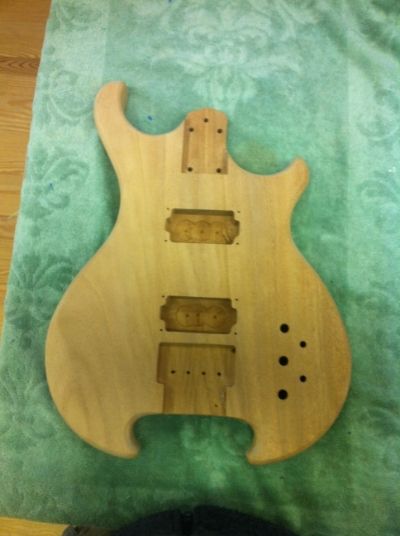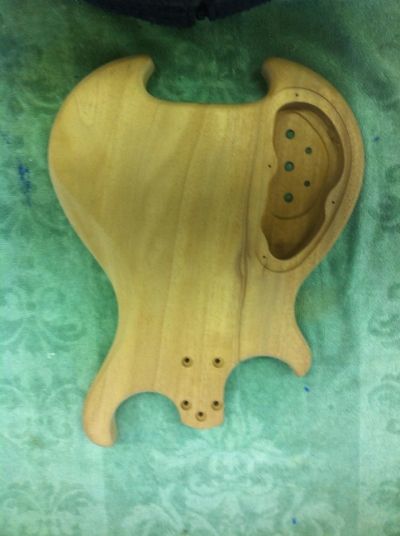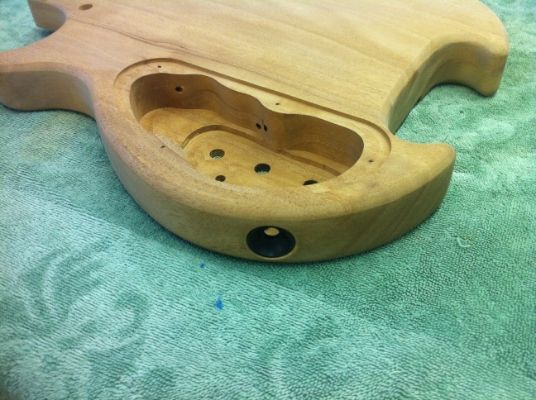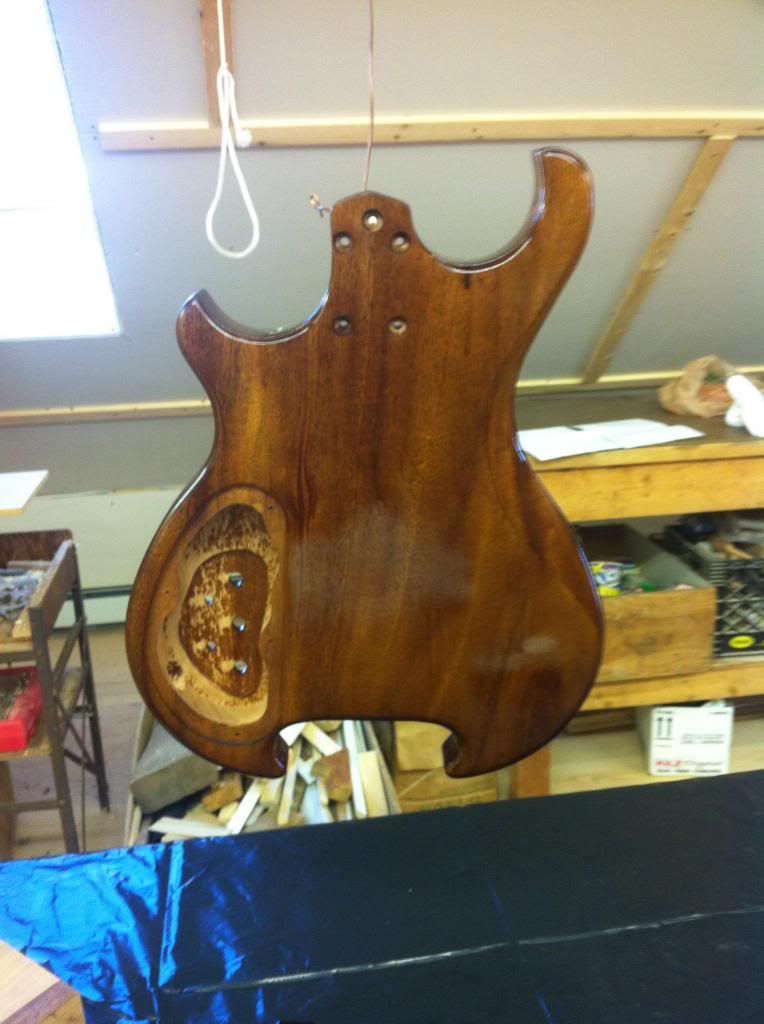I have an original 1986 Steinberger XP2 bass, which had a wood body and headless graphite composite neck. I love the headless tuners, it NEVER goes out of tune, but always sounded a bit sterile. I designed a wood body for the neck and bridge tuner inspired by an Alembic Mark King bass. The "omega" cutout they have in the bridge area always made me think it could be adapted for a bridge tuner. I made up a template from hardboard and used it to cut out a mockup from 2 layers of 3/4" plywood just to see how it would balance:

I cut out the body from a single piece of mahogany


The neck heel has a compound bevel profile, tapering from the fingerboard face down to the back by around seven degrees. This was done so the composite necks would pop out of the mold. The neck heel also tapers from the last fret heading up towards the nut, so the whole neck pocket is an assembly of beveled faces. PITA! Here's a shot of the neck heel against a square to illustrate:

As it's my first build, I didn't know how to set up a jig for all the angled faces, so I routed a straight pocket vertically, but tapered front to back, figuring I could shim the little "triangles" of empty neck pocket along bottom of the neck pocket, shown here:

Here's another one showing the back of the neck heel. Note the taper towards the nut:

Now the painful part - after routing the neck pocket, I find that the neck is off center by around 1/4" towards the G string at the nut. Doh! My neck pocket is correct on depth, but must have gotten cock-eyed. So much for measure 47 times, cut once.

More pain and suffering. The neck got dropped (he shall remain nameless) in the shop, creating an evil gouge in the finish surface at the headless end of the neck. Near as I can determine, Steinberger necks were laid up by spraying black gelcoat into a mold and laying up graphite carbon fiber, which you can see exposed here. I'm hoping this is basically a gelcoat patch, as no structural damage is apparent:

I entertained the idea of filing or chiseling the sides of the pocket until I had enough twisting room to get the neck straight, and then "bedding" the neck in mahogany dust and epoxy, but decided it was better to start fresh by gluing matching grain mahogany strips to the sides of the pocket so I can re-route. I made a couple of wedge-shaped rails (shoulda thought of this the first time) with the top faces and inside edge matching the seven degree bevel so the router can ride along them with a top bearing pattern bit to re-cut the pocket sides. I will end up cutting out about 98% of what I glued back in, but hopefully it will line up right. I'm scratching my head as to how to get the router guide rails parallel to the tapered neck heel sides. I thought maybe I could clamp the neck to the body with a continuous laser line from bride up to the nut (I have a laser level that can rotate to vertical or horizontal beam) to center it, and then set the rails in tight to the heel so they follow the heel taper, getting closer together on the nut side? Any any and all advice appreciated. You'll be sorry you let me into this forum, mark my words!















